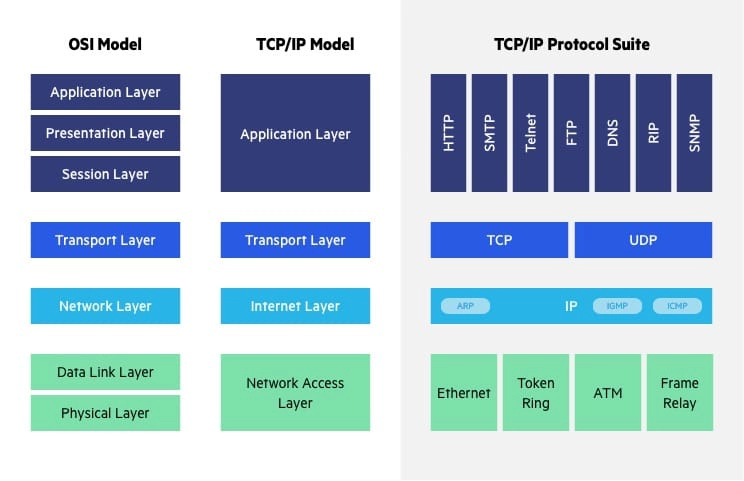OSI Model Vs TCP/IP Model
 Patrick Kearns
Patrick Kearns
The OSI model and the TCP IP model are fundamental concepts in computer networking, providing structured approaches to how data is transmitted across networks. They help engineers and administrators understand how different technologies interact and how communication occurs between devices.
The OSI model, developed by the International Organisation for Standardisation, consists of seven layers, each with a specific role in the communication process. These layers are application, presentation, session, transport, network, data link, and physical. The purpose of this model is to standardise network communication and define clear boundaries for each function, making it easier to diagnose issues and design network protocols. Each layer interacts with the one above and below it, ensuring that data flows smoothly from the sender to the receiver.

The TCP IP model, developed by the United States Department of Defence, is a more practical approach used in real world networking. It consists of four layers, namely application, transport, internet, and network access. It is the foundation of the internet and most modern networks, guiding how data packets are sent, received, and managed. Unlike the OSI model, which is more of a theoretical framework, this model was designed alongside real network protocols and has been widely adopted in the industry.
One of the key differences between these models is the number of layers. The OSI model is more detailed with its seven layer structure, whereas the TCP IP model consolidates similar functions into fewer layers. The OSI model distinguishes between the presentation and session layers, whereas the TCP IP model combines these responsibilities within the application layer. The OSI model also separates the data link and physical layers, while the TCP IP model groups them under the network access layer.
Another important distinction is how they were created and applied. The OSI model was developed as a conceptual framework to provide structure to networking, while the TCP IP model was designed with practicality in mind. The latter was used to develop the internet, making it the dominant model for real world applications. While the OSI model provides a helpful reference for understanding network functions, modern networking protocols align more closely with the TCP IP model.
Both models play a role in networking education and practice. The OSI model is often used as a teaching tool to help students and professionals understand network communication in a structured manner. The TCP IP model, being the one that governs internet traffic, is crucial for those working with network protocols and infrastructure. Understanding both models helps in troubleshooting, designing networks, and improving communication between different network technologies.
Subscribe to my newsletter
Read articles from Patrick Kearns directly inside your inbox. Subscribe to the newsletter, and don't miss out.
Written by
